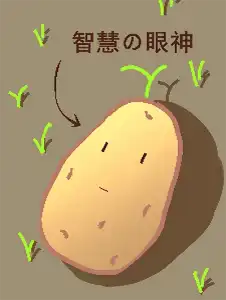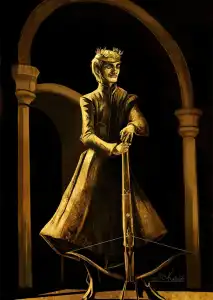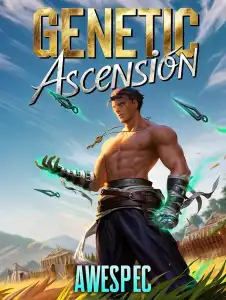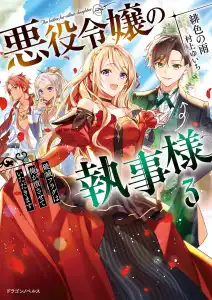Chapter 226: Rosaline (1) |
“You already know why I asked to see you, and you seem to know a lot about it,” Young-Joon said.
He took a bottle of orange juice out of the fridge.
“Oh, I’ll take a Coke.”
“I have Pepsi and Sprite. What would you like?”
“Oh, then Sprite.”
Young-Joon handed her a can of Sprite and sat across from her.
“Originally, I didn’t plan on coming to see you, Doctor Ryu, but seeing Doctor Cheon’s face after all these years gave me some courage. Doctor Cheon kept on convincing me, so I thought I should tell you what I know.”
“What did he say to convince you?”
“He told me that you brought up wanting to see me after the terrorist attack at the GSC conference. He asked if I knew anything about the terrorists, and when I said yes, he squeezed my hand and convinced me that we have to save humanity together.”
“But I might not be able to give you as much information as you’re hoping for. As you can see, I’m… pretty broken, and I’ve been away from research for a while now.”
Elsie shrugged.
“Doctor Ryu, look at how ruined a scientist gets when the project they’ve worked on for their entire life fails.”
“What do you mean? You’re not ruined, so don’t say that.”
“I live off of alcohol and drugs. I’m a failure. I failed to create Rosaline, and I failed to create Doctor Ref.”
“You created Doctor Ref?” Young-Joon asked.
“Yes.”
“Did you teach her?”
“No, I literally biologically created her,” Elsie said.
“What do you mean? Are you saying that she’s an artificial human or something?”
“I was working at an embryology lab in the United States. We were using intracytoplasmic sperm injection[1], transfection reagents, and TALENs[2] to genetically modify fertilized eggs. We were developing them and observing what happens,” Elsie said.
“And we made Doctor Ref. We took the best sperm from the sperm bank and fertilized my egg with it. We took the nucleus out, put the nucleus of my somatic cell inside, and engineered some genes. We implanted it in my uterus, and I gave birth to her.”
“... What?”
Young-Joon’s jaw dropped in shock.
“Since we used the nucleus of my somatic cells, she’s sort of like a clone of me. But we manipulated a lot of genes, and as a result, she has Anglosaxon facial features even though I’m Jewish. She’s probably around the same age as you in terms of her birth, but she’s the same cellular age as me.”
“Are you crazy? How could you… What have you done?” Young-Joon shouted in shock.
“I know. It’s unethical, right?”
“It’s worse than just being unethical! You genetically modified an embryo and gave birth to it yourself?”
“Haha!”
Elsie laughed a little.
“I knew you would scold me. It’s one of the reasons I was worried about coming to see you.”
“Me nagging you isn’t the problem right now. A research ethics violation of that magnitude should be…”
“Not at the time,” Elsie said.
“What?”
“It was in the middle of the Cold War. You may not know because you’re young, but the United States and the Soviet Union were in the midst of a mad scientific race, Doctor Ryu. It was a time when nuclear weapons were being developed like crazy.”
“...”
“Ethics was very slow to react to biology, which had just been born. All sorts of ethical regulations were loose at the time, and it didn’t even occur to people that they needed to make those regulations. People were still dealing with the aftermath of World War II, and they were terrified that a more destructive war would break out the longer the Cold War went on. It was a time when any research that could advance science was encouraged.”
“Sigh…”
“Doctor Ryu, research ethics changes with time.”
“But don’t you have a conscience? Did you really have no hesitation about playing with human lives like that?”
“How could I not?” Elsie said. “That’s why I gave birth to her myself. Most of the other scientists discouraged it because I could have lost my life if the genetic modification I made caused any problems in development. But I gave birth to her myself; that girl is my daughter and my clone. At the time, science was like an immature adolescent who had just gotten bigger. That’s when I got on a boat with her. We crossed the Pacific together on a crappy boat.”
“It was a very risky and reckless experiment, but we believed we had succeeded when she was born safe and sound. As a child, she stunned everyone in the lab with her incredible intelligence,” Elsie said.
“But why did that happen?”
“... After I gave birth to her, she didn’t feel like a research project anymore,” Elsie said. “She was my daughter. I wanted her to be free, so I snuck her out and fled to the Middle East where my relatives live.”
“Your relatives?”
“I said I was Jewish, right?” Elsie said. “Rosalind Elsie Franklin, the woman who was the biggest contributor to discovering the DNA double helix, was also Jewish. She was born in London and British, but she had a lot of relatives who settled in Palestine. One of my uncles was a high commissioner in Palestine, and the other was the prosecutor general. I was born in Palestine.”
“...”
“I grew up hearing about Rosalind Franklin. My mother always told me stories about her because she was the same age as my mother.”
“So that’s why you named your artificial cell Rosaline.”
“That’s right. My name, Elsie, is also Rosalind Franklin’s middle name.”
Elsie took a sip of her Sprite.
Rosalind Elsie Franklin: she was a female scientist who had the most unfortunate fate in scientific history. She was at the forefront of the scientific community as a woman during a time when sexism was common. She competed and collaborated with the geniuses of her time, such as Jamie Anderson, and continued her research despite the discrimination she faced.
Unsurprisingly, she was also very concerned with human rights and ethics. Rosalind Franklin was active in labor union organizations and the women’s suffrage movement, and she later became a member of the London County Council. She also helped resettle Jews fleeing Nazi tyranny.
Then, she died of ovarian cancer at the young age of thirty-seven.
“The reason why she died was because she used a lot of X-rays to figure out the structure of DNA,” said Elsie. “My family fiercely discouraged me when I first said I wanted to do science. My mother regretted telling me about Franklin.”
“Because she died early?”
“That’s one of the reasons, but it’s because, in the end, Franklin didn’t get anything,” Elsie said. “Doctor Ryu, some people think science belongs to men.”
“There are lots who see it that way.”
“They think women are emotional, delicate creatures, and men are logical, rational creatures. That’s the gender stereotype that persists even in the twenty-first century. It’s common even in Northern Europe, where gender equality is very much realized,” Elsie said. “I don’t know if it’s true or not. Maybe it occurred because of the Barnum effect, or maybe there are actual biological differences in logical ability, but scientists should be silent about what they can’t say.”
“Because science does not accept anecdotal opinions that aren’t backed by scientific evidence.”
“That’s right. But the scientific community, which is supposed to be so rigorous, is surprisingly full of sexism. It’s within the scientific community, but it’s worse when you’re trying to enter it. Can you imagine? When I told my family that I was going to get a degree, the adults in my family said, ‘That’s not something a girl should do. What kind of girl would go into science and get a doctorate?’”
“...”
“Even an unusually brilliant female scientist like Franklin couldn’t survive in that world because, by nature, women don’t have scientific minds. Even if women overcome that penalty with their blood, sweat, and tears, all they end up with is ovarian cancer, not a Nobel Prize,” Elsie said. “All those carcinogenic chemicals, viruses, and bacteria have a bigger impact on a woman’s body because they are going to have babies one day.”
“...”
“I wanted to show them that they were wrong. I wanted to show them that I was really good at science.”
“That’s why you created life?”
“Yes, because it was the most challenging field in biology. Even in this age, where they are conquering cancer, sending humans into space, and modifying genes…” Elsie said. “The scientific community doesn’t have a concept of what a living thing is.”
Elsie was right. The scientific community had defined living things over a hundred times, but they were all wrong; all of them had exceptions.
For example, if they defined the ability to absorb and digest something as the standard for living things, then fire could be a living thing as it digests firewood and oxygen by burning it. If they used the ability to bear offspring as the criteria, then infertile couples and animals like mules would be nonliving things.
“Viruses have genetic material, but they are not cells because they’re just a clump of proteins. They are also not biologically active until they infect a host,” Elsie said. “So the biological community has still not decided whether viruses are living things or not.”
“I personally think viruses are living things,” Young-Joon said.
Elsie smiled.
“How fitting for someone who used to be in the Life Creation Department. Everyone on our team thought so. But what about transposons? What about prions, which are capable of self-replication? Are they living things?”
Elsie took another sip of her Sprite.
“The concept of life: the worst and greatest mystery on the planet that no one could figure out. I wanted to solve this and show the success of a female scientist,” Elsie said. “That’s why I did the Rosaline Project, and I almost succeeded a couple of times. That’s when I realized that this isn’t science but in the realm of God. Humans have a nasty habit of reducing things we don’t understand scientifically to religion or mysticism, but the creation of life was truly mystical.”
“...”
“It was ecstatic. I’ve used Synchronization Mode a few times. I was able to observe all life forms that were created before Rosaline and less complex than her. It was a miracle, although it was just for a moment because I barely had any fitness. It was probably a very simple image compared to what you’re using right now.”
Elsie smiled bitterly.
“The Rosalines I made weren't a living thing. It disappeared in a few hours. They weren’t short-lived creatures like mayflies—they weren’t living things to begin with.”
“Is that why you gave up on creating Rosaline and created Doctor Ref?”
“I hate saying unscientific things, but I think creating life is something that can only be done by certain people who were carefully selected by some unknown criteria. I thought that would be Doctor Ref,” Elsie said. “The moment I heard about the successful young scientist in the Life Creation Department, I realized that you had succeeded in what Doctor Ref and I failed at.”
“I felt that Doctor Ref was obsessed with Rosaline. Is that why she is carrying out terrorist attacks?”
“She’s a child who has been hurt a lot,” Elsie said. “But she’s not some mad scientist who wants to destroy the world with her pain. She wants to spread Rosaline around the world.”
“What?”
“We thought Rosaline was some kind of virus. Rosaline Syndrome: that’s the name of the syndrome you’ve been infected with and are suffering from.”
1. A process where a single sperm is injected directly into the egg ☜
2. A type of restriction enzyme that is used for genetic modification, like CRISPR ☜
Clara's Thoughts
Wow! What a turn of events!! Honestly, I didn’t expect Elsie to actually come to meet Young-Joon, but I guess Cheon Ji-Myung is very persuasive? Anyways, what would you do if you were infected with Rosaline? I think I’ve said this before, but if I got infected with her right now as a student, I think I would just ask her for exam question answers.

















